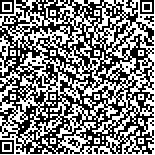| 摘要: |
| 采用细菌16S rDNA通用引物和PCR扩增等方法,构建了南海南沙海区沉积物16S rDNA文库,并通过RFLP酶切分型对所获得的70个克隆进行测序。从国际分子生物学数据库中调取相关序列,以PAUP4.0分析软件构建序列同源性矩阵和系统发育树图。结果表明,与细菌文库中克隆相似的微生物属于4个细菌类群:变形细菌(Proteobacteria)(60%)、革兰氏阳
性细菌(Gram-positive bacteria)(13%)、浮霉菌(Planctomycetes)(10%)和无硫绿细菌(Green nonsulfur bacteria)(6%),其中变形细菌(包括δ-、γ-和α-变形细菌)是明显的优势类群。采用Blast程序对所有序列基因数据库进行搜索,发现只有一个克隆与已知序列完全相似,说明文库具有极高的多样性。但是对古细菌文库中所获得的克隆子进行二级结构和序列特征分析的结果表明,这些克隆子均为海洋未获培养的细菌,因此在作者的文库中并未有古细菌的发现。 |
| 关键词: 南海, 海洋沉积物, 细菌, 古细菌, 多样性 |
| DOI: |
| 分类号: |
| 基金项目:教育部长江学者特聘教授配套优秀青年教师骨干基金(2000-2001)资助项目;广东省自然科学基金面上项目,001213号 |
附件 |
|
| PHYLOGENETIC DIVERSITY OF BACTERIA AND ARCHAEA IN THE NANSHA MARINE SEDIMENTS, AS DETERM INED BY 16S rDNA ANALYSIS |
|
XU Fei1, DAI Xin1, CHEN Yue-Qin1, ZHOU Hui1, CAI Jian-Hua2, Qu Hang-Hu1
|
|
1.School of Life Science,Zhongshan University;2.South China Sea Institute of Oceanology,Chinese Academy of Sciences
|
| Abstract: |
| A 16S ribosomal DNA (rDNA) clone library from Nansha marine sediments was established by PCR using suitable primers. A total of 200 clones were selected by amplified rDNA restriction analysis(ARDRA) using four, fourbase-specific restriction enzymes (Afa Ⅰ, Alu Ⅰ, Hae Ⅲ, MspⅠ). 70 restriction fragment length polymorphism (RFLP) types, constituting 35% of the total clone libraries, were detected and sequenced. Examination of 70 16S rDNA clones showed that the marine sediments of Nansha in the South China Sea contained a phylogenetically diverse population of organisms from the bacteria domain covering most of the microbial diversity in the libraries. For 70 clones, only one clone was identical to the known 16S rDNA sequences in the Ribosomal Database Project small subunit RNA database. In our clone library, all sequences had>85% similarity to rDNA sequences retrieved from the DNA databases. The sequenced clones fell into four major lineages of the domain bacteria: the alpha, gamma and delta Proteobacteria, Gram-positive bacteria, Green nonsulfur bacteria, Planctomycetes and related organisms. 60% of clones belonged to the delta, alpha and gamma Proteobacteria, 13% belonged to Gram-positive bacteria. 10% to Planctomycetes and related organisms and the remaining 6% to Green nonsulfur bacteria (6%). The results suggest that these clones are very diverse in phylogeny. The subclass of the Proteobacteria, especially delta Proteobacteria predominates in this study. Molecular diversity of archaea was also analyzed by PCR amplification and sequencing of the rDNA clone library using an archaeaspecific primer set. The secondary structure and sequence signatures of the 16S rDNA from the representative clones were analyzed and the results showed that all clones obtained from the archaea clone library were closely related to uncultured bacteria. Therefore , no archaea was found in this library. |
| Key words: South China Sea, Marine sediment, Bacteria, Archaea, Diversity |
